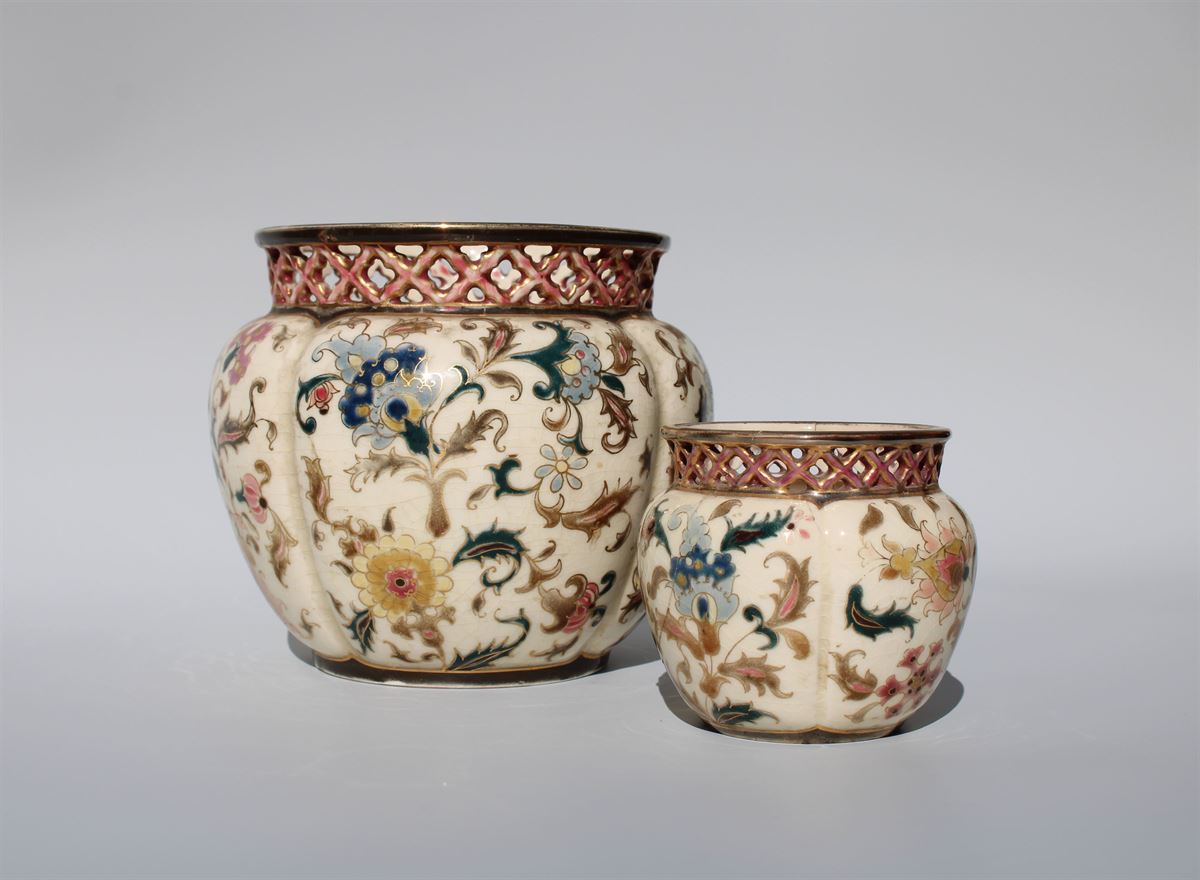tablica
| Inventory numbers: KB-181 and KB-182 |
| Material: porcelain |
| Dimensions: height 14 cm and 8 cm |
| Dating: from 1868 to 1897 |
| Made by: ZSOLNAY PECS |
| Origin: Hungary |
Središnji sadržaj
The vases are bulbous in shape and divided into four sections with scalloped edges. The entire surface is covered with colourful (blue, light blue, yellow, green, etc.) floral and convoluted motifs framed by golden bands. Their necks are low and intricately perforated, with visible crackles throughout the surface, yet the vases are well preserved.
The manufacturer is a Hungarian factory from Pécs called Zsolnay, founded in 1853 by Miklós Zsolnay (1800–1880). His son, Vilmos Zsolnay (1828–1900), joined him in 1863, when the factory gained worldwide fame. The factory produced artistic ceramics and gained particular renown for its production of the eosin technique. Eosin is a technique that gives objects a unique reduced sheen, and the process and technique remain a secret to this day. Our vases belong to the phase of production Folklorism – Historicism – Victorian Eclecticism (1868 – 1897). The vases’ backs feature the manufacturer’s seal – ZSOLNAY PECS, five churches, and the initials T. J. M., which stand for the names Tereza, Julia, and Miklos, the names of Vilmos’s children who continued the tradition of ceramics crafting. Initials ZSO are embossed on the back of the small vase, next to the mark, and ZSOLNAY PECS 1064 is embossed on the back of the large one.


